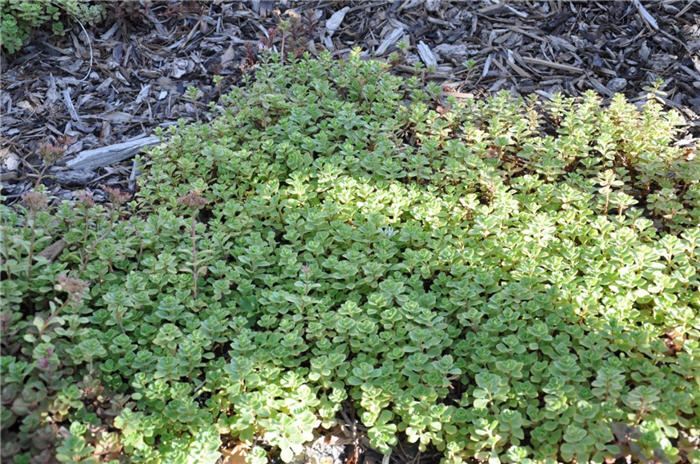| Botanical Name: Sedum acre | |
| Common Name: Moss Sedum |

-
Anatomy
-
Culture
-
Design
Plant Type
Ground cover, Perennial, Succulent
Height Range
Under 1'
Flower Color
Yellow
Flower Season
Spring
Leaf Color
Green, Grey Green
Bark Color
n/a
Fruit Color
n/a
Fruit Season
n/a
Sun
Full
Water
Low, Medium
Growth Rate
Moderate
Soil Type
Sandy, Clay, Loam, Rocky, Unparticular
Soil Condition
Average, Rich, Poor, Well-drained, Dry
Soil pH
Neutral, Basic
Adverse Factors
Attracts Bees
Design Styles
English Cottage, Formal, Japanese, Mediterranean, Ranch, Spanish
Accenting Features
Fall Color, Showy Flowers
Seasonal Interest
Spring, Summer, Fall
Location Uses
Entry, Perennial Border, Shrub Border, Foundation, Parking Strip, Patio, Raised Planter, Walkways
Special Uses
Container, Mass Planting, Small Spaces
Attracts Wildlife
Butterflies
Information by: Stephanie Duer
Photographer:
Photographer:
-
Description
-
Notes
A perfect sedum for rock gardens and borders, Goldmoss sedum forms a carpet of soft green that becomes completely engulfed with yellow flowers in summer. Foliage turns a beautiful shade of red during cold months. Use among stepping stones, along a garden path, or in a parkstrip. Also nice in containers. Grows about 3 inches tall and spreads about 10 inches wide. It is a little brittle, and so is best with only light foot traffic.
As a group, sedums prefer well-drained soils, including sandy-loam, clay-loam, or rocky soils, as long as it is well drained. In nature, most sedums occur in light shade or partly sunny sites, while a few are also well-adapted to full sun situations. They can tolerate both drought conditions or more frequent watering, but the key is good drainage. Their xeric nature makes sedums popular for use in rock gardens, roof gardens, wall gardens, and living wreaths.